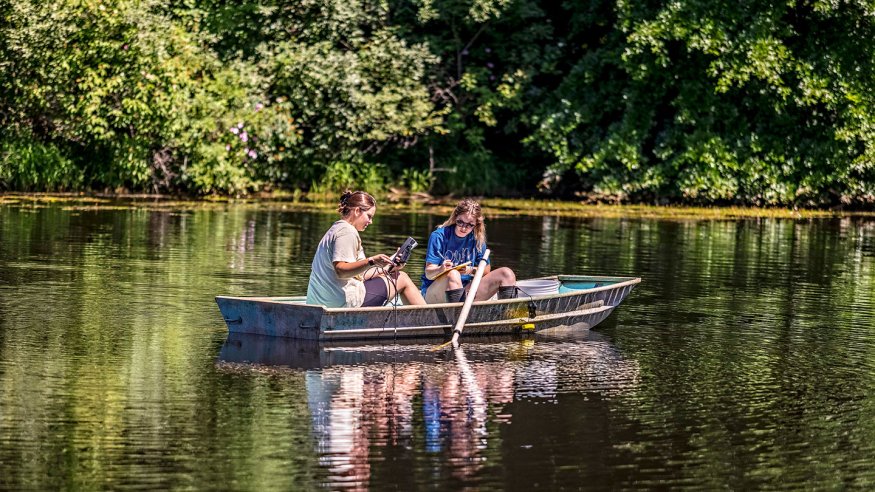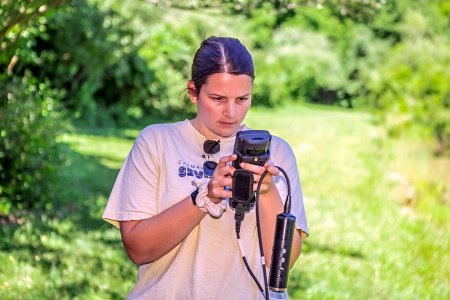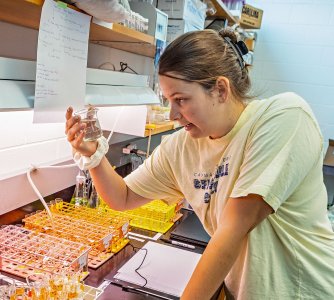
International Investigation
Ohio Wesleyan Students Contribute to Global Road Salt Research Project

Name: Abby Doza ’23
Hometown: Plain City, Ohio
Major: Pre-Professional Zoology
Minor: Environmental Science
OWU Connection Experience: Summer Science Research Program
Doza and Makenna Juergens ’23 of Plain City, Ohio, are participating in Ohio Wesleyan’s annual 10-week Summer Science Research Program. They are completing a project titled “Exploring Local and Regional Variation in NaCl tolerance in Daphnia pulicaria,” or water fleas, under the mentorship of Amy Downing, Ph.D., professor of Zoology in OWU’s Department of Biological Sciences.

What We’re Researching
“We are researching Daphnia pulicaria’s salt tolerance. Daphnia are an important species in freshwater ecosystems and are bioindicators of their ecosystem’s health.
“We are a part of an international collaboration of freshwater ecologists who are doing the same experiments. The purpose of our research is to see the variety of salt tolerance in Daphnia throughout the world. If we have time this summer, we are going to do the same experiments on a different species of Daphnia.
“This is important because the EPA limits of salt in freshwater have been found to be too high, meaning Daphnia die at lower salt levels. We want this research to back up previously found work and use it to have the EPA limit lowered.”

My Favorite Moments
“I really enjoy seeing the Daphnia under the microscope and being able to see them in complete detail. They look like an animal up close, but you would never be able to tell without a microscope. I also really like seeing how many Daphnia babies can come from just one female. We have a single Daphnia in a tube and within a couple weeks the tube will be filled with Daphnia.”
Lessons Learned
“I am learning about how humans impact even the smallest of animals. Daphnia are small but are a big part of the freshwater ecosystem and the food web. Knowing their importance has motivated me to continue working with zooplankton. In classes, I have learned a lot about the food web and how each organism is crucial to it, and this research teaches me similar ideas.
“This research relates to my future career because I want to help with conservation and preserve our natural ecosystems. This opportunity has also given me valuable work experience. I have gained a closer connection to Dr. Downing and other professors this summer.”
Why I Chose Ohio Wesleyan
“I chose OWU because of the zoology program. I wanted a small school where I could have personal relationships with professors, but I also wanted amazing zoology classes. OWU is close to home, which I like, and I am happy with my choice.”
My Plans After Graduation
“After graduation, I will attend graduate school in an ecology, evolution, and behavior program. I want to continue my learning of animals and conservation. OWU will help me with my resume, CV, and graduate school application. I plan to make the most of OWU's student resources this upcoming fall to prepare my application.”
